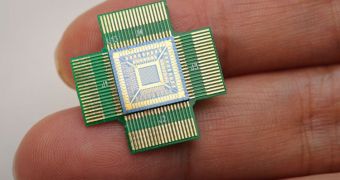A group of experts at the American space agency announce the development of a new technology for measuring air quality, as well as for detecting hazardous chemicals in the environment. The new sensors will be able to function while powered by a simple smartphone.
The tool was showcased on September 28 in Los Angeles, during a training exercise carried out by the LA Fire Department. The sensor is called Cell-All, and was developed by NASA Ames Research Center physical scientist Jing Li. The ARC is based in Moffett Field, California.
This training exercise was sponsored by the California Environmental Protection Agency, the LA Fire and Police Departments, as well as the Science and Technology (S&T) Directorate at the US Department of Homeland Security.
During the trial, Cell-All was used to search for and detect dangerous carbon monoxide build-ups. This type of response and rescue training exercises could help emergency responders a great deal in the event of an actual natural disaster or terrorist attack.
“This new technology can enhance both personal and public safety by utilizing a common device, such as a cell phone, to detect hazardous chemicals,” explains the technical director of the S&T’s Homeland Security Advanced Research Projects Agency (HSARPA), Stephen Dennis.
“Our goal is to create a lightweight, cost-effective, power-efficient resource for widespread public use,” the official adds. According to Jing Li, this sensor is very energy-efficient, meaning that it could remain powered on for prolonged periods of time.
Its functions are augmented by a dedicated smartphone application, which is able to translate the signals Cell-All relays. There are two ways in which the device may be used – either as a personal warning tool, or a part of a local grid.
In the second scenario, anonymous data on air quality and chemical levels are sent automatically to local authorities, which are thus capable of having an up-to-date estimate of what they're dealing with.
The Cell-All technology was demonstrated with two different prototypes. The first was built by the ARC Center for Nanotechnology, and the second by a collaboration between San Diego, California-based Qualcomm Inc. and Longmont, Colorado-based Synkera Technologies Inc.
As the technology is developed further, we can expect to see it on the market within a couple of years.

 14 DAY TRIAL //
14 DAY TRIAL //